SUMMARY
This is AI generated summarization, which may have errors. For context, always refer to the full article.
![[ANALYSIS] How Philippine independence influenced China’s transformation](https://www.rappler.com/tachyon/2023/06/Sun_Yat-sen_1924_Guangzhou.jpg)
In 2018, at a Philippine independence day reception in Beijing, the late Ambassador José Santiago L. Sta. Romana broke the usual mold of diplomatic toasts by starting with a presentation of an iconic picture: that of Filipino revolutionary leader Mariano Ponce and Chinese founding father Sun Yat Sen.
The two had met in Yokohama in 1899. Ponce was then a pioneering Filipino diplomat tasked to solicit Japanese support as Filipino forces battled an invading American army. Sun, on the other hand, was then a noted intellectual eager to learn about Japan’s transformation from a backward country to a world power.
At a dinner hosted by the renowned former samurai and future Japanese prime minister Tsuyoshi Inukai, Sun was visibly impressed by Ponce’s stories of Filipino exploits against both Spain and the United States. Ponce drove home the point that all Asian peoples have a duty to aid the Filipino cause, and Sun took his message to heart. Taking huge personal risks, Sun arranged for a stealthy shipment of Japanese arms to support the Philippine Republican Army, but the steamship carrying the guns tragically sank off the coast of Shanghai.
Sta. Romana’s reference to this episode was a refreshing reframing of the usual historical narrative that Chinese officials like to emphasize when extolling Philippines-China relations. The Chinese vice foreign minister in the audience said he was touched by the story. Before that, their favorite anecdote had been the visit by a sultan of Sulu to Ming China in the 15th century, which marked a milestone in the long history of Filipino-Chinese cultural exchanges. But while the story of that visit is an important symbol of the filial ties that bind the two peoples, it also harks back to a different international order that existed in Asia in the pre-modern era. At that time, China was the “middle kingdom,” the prime civilization that many Asian cultures sought to emulate. Eager to learn from Sinic ways, many of these cultures acknowledged Chinese pre-eminence.
But unlike the sultan of Sulu who had to kowtow to the Chinese emperor, it was the Chinese founding father who was eager to learn from the Filipino diplomat when the two met in Japan. The story of their meeting and subsequent collaboration was part of a bigger story of a Chinese re-discovery of the Philippines at the turn of the last century, and how this re-discovery helped spark a nationalist awakening among the Chinese people.
This story could trace its roots to 1793, when a British diplomat sought to establish trade relations with the Qing dynasty. The latter was shocked by the western envoy’s audacity to treat the Chinese emperor as an equal of the English king. In the Chinese conception, the middle kingdom was preordained to sit atop the universal pecking order, and therefore deserved paeans from all rulers of the world. The British, however, were operating under western norms arising from the outcomes of the Westphalian conferences of 1648, which dictate that all states are equally sovereign. For them, keeping the appearances of treating the Chinese as an equal despite the obvious superiority of British power was already an act of magnanimity. Naturally, the clash between these two worldviews resulted in a humiliating outcome for China.
It took two Opium Wars in the 1800s for the Chinese to accept that they were no match to western technology and therefore powerless to defend their domestic authority, let alone enforce their worldview. The British, followed by other western powers and then Japan, viciously extracted concessions after concessions from the decaying Qing dynasty. The Chinese had no choice but to acquiesce and to endure what they now refer to as the “century of humiliation.”
Meanwhile, at around the same time, a modest but unprecedented economic transformation was unfolding in the Philippines. International trade had been rapidly globalizing, and Manila had become one of its nodes. This led to the emergence of a local middle class that naturally craved education and empowerment. In 1812, Spain enacted the Cadiz Constitution, which started a wave of liberalization that eventually reached Philippine shores. The opening of the Suez Canal in 1869 further exposed this new Filipino middle class to liberal ideals. In 1880, Filipino students in Europe, inspired by Enlightenment principles, formed the Propaganda Movement and started articulating the philosophy that would later underpin the Philippine Revolution of 1896.
Unlike their Chinese contemporaries, the Filipino elite fully understood western norms. They knew that while these norms adhered to the Westphalian notion of a community of states operating as sovereign equals, they also required that nations must first prove themselves worthy of membership in the said community. And so, after having forced Spanish forces to a standstill in 1897 and then, following a short interlude, virtually defeating them in 1898, Filipino leaders declared independence and cloaked their movement with the full panoply of western-style statehood. Having already formed a modern army, they drafted a democratic Constitution, formed a parliament and a judicial system, dispatched diplomats, minted coins, and printed stamps. The Philippines was asserting its place in the club of nations.
Within a year, however, the Americans decided to steal the Philippines from the Filipinos, sparking a protracted war that proved Filipino mettle and inspired many Asian peoples, including the Chinese. It was in the midst of the Philippine-American War that Sun sought out Ponce in Japan and moved mountains to help the Filipino cause. Some historians think that Sun saw in an independent Philippines a possible ally to the Chinese revolution. While this might also be true, his main motivation was likely sentimental. I suspect that he saw the Philippines as he saw Japan: an example of what the Chinese people could achieve if they overcame some of their philosophical shackles.
One of these is their Confucian conception of power correlation, which is based on the concept of the li. Crudely translated into western philosophy as natural law, the li emphasizes harmony in social relationships between student and teacher, servant and master, emperor and subject – and basically strong and weak. It is a profound concept that cannot be oversimplified, but one of its basic premises is the idea that power disparities are somehow metaphysically preordained.
On one hand, this premise informed the Chinese conception of a hierarchical world order with China at the center. Since the Chinese had never met a culture more advanced than theirs, they proudly imagined an international system revolving around China as the beacon of civilization, with other cultures finding their place along concentric orbits according to their proximity to Sinic ways. On the other hand, the same premise petrified the Chinese into inaction in the face of clearly superior western forces that were overturning this Chinese centrality and overrunning their own homeland.
Yet before the eyes of the Chinese elite, the Filipinos shattered this premise. By standing up against Spain and then the United States, the Philippines upended the logic of the li, prompting some profound self-reflection among China’s thinking class. In her 2002 book Staging the World: Chinese Nationalism at the Turn of the Twentieth Century, American historian Rebecca Karl dedicated an entire chapter to how the Philippines influenced China’s nationalist awakening. She quotes, among others, Cantonese public intellectual Ou Jujia, who wrote:
“They (the Chinese elite) have lost all hope. Their level of thinking stops at a conviction that to be strong is sufficient for taking advantage of the weak; to be big is sufficient for taking advantage of the small; to be numerous is sufficient for torturing the few. They have no knowledge of the fact that strong and weak have no definite form; big and small do not define strength; numbers do not define principle; that self-reliance can turn weak into strong, self-strengthening can turn small into big, and the unity of the people can turn the few into the many.
“Just look at the small islands of the Philippines led by native people opposing the preeminent rising power of the world, America…. So, what of our China, with its vast territory and huge population, which is thousands of times bigger than the Philippines? If the Philippines can be self-reliant, what is the logic behind the claim that China cannot be? Please, let us now consider the Philippines.”
As Karl noted, Ou’s writings reflected the emerging sentiments then of the Chinese intelligentsia, which effectively challenged the validity of such “seemingly immutable categories” as “civilization,” “strong,” “weak,” “big,” and “small” – concepts that formed a central part in classical Chinese philosophy. The Philippines, after all, had been on the fringes of the Sinocentric world order, barely a bearer of Sinic civilization. Yet here it was now, providing a model for a weakened China to confront an ascendant west.
The future jurist Liang Qichao, who at that time was among China’s most famous public intellectuals, drove home this point by publicly professing that he “must kowtow” to “the Filipino,” for “he has twice waged war against the white man, and never faltered despite difficult odds.” Finally, the Chinese were beginning to shed their middle kingdom pretentions.
Alas, the First Philippine Republic eventually lost to overwhelming American power. As Filipino defeat became imminent, the leadership diverted some of the Japanese arms intended for the Philippines to the Xinhai Revolution in China, then already being led by Sun. The Filipinos then shifted to quietly pursuing freedom through the dexterity of their pens and the eloquence of their tongues rather than the might of their guns. But in the mainland, where the Chinese translation of Ponce’s book on the Philippine Revolution began to circulate widely, the philosophical liberation that the Filipino movement helped spark unleashed an unstoppable tide that eventually led to the founding of a new China, of which Sun became the first president.
Like their Filipino counterparts, the early leaders of this new China aligned themselves firmly with the struggles of the subjugated peoples of the world. Communist thinker Zhou Enlai became a stalwart of the Bandung movement that laid the foundation for traditional solidarity among countries of the global south. Today, China has become confident enough to set about fulfilling the Chinese dream of national rejuvenation, and Filipinos can be proud to have played a small part in the rich history behind this remarkable Chinese transformation. – Rappler.com
JJ Domingo is a career foreign service officer. He was posted in Beijing from 2017 to 2020. The views expressed here are his own and do not necessarily reflect the official position of the Department of Foreign Affairs.
Add a comment
How does this make you feel?
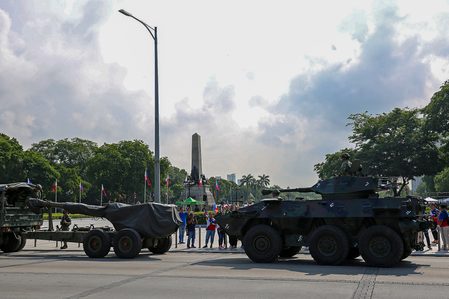
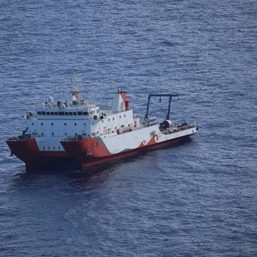
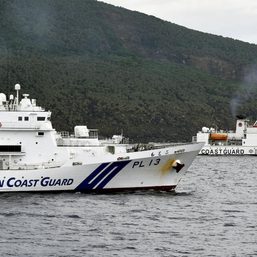

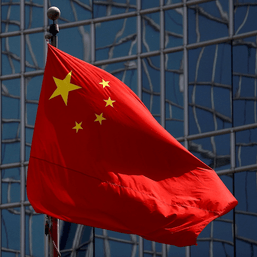
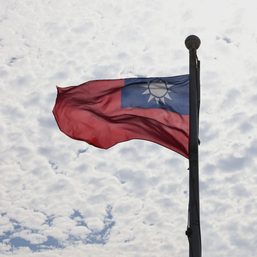
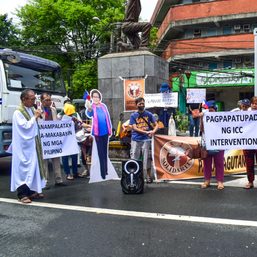
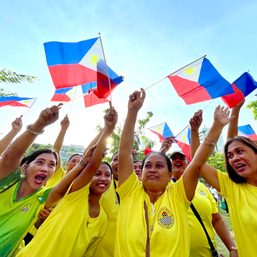

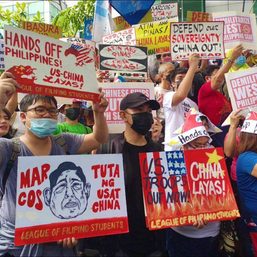
There are no comments yet. Add your comment to start the conversation.